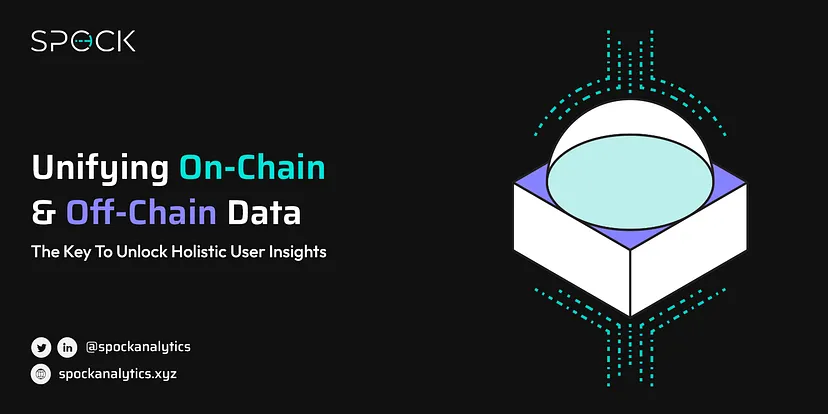
Decentralized applications, or dApps, provide trustless, censorship-resistant, and transparent solutions to various industries. DApps are built on blockchain technology, which allows for secure data storage and peer-to-peer transactions. However, from the builder’s standpoint, the success of dApps relies not only on on-chain data but also on off-chain data. Therefore, analyzing both on-chain and off-chain data can give builders and stakeholders valuable insights, leading to better decision-making, improved user experience, and enhanced security. This article will explore the benefits of analyzing both on-chain and off-chain data in decentralized applications. On-chain data is all the information stored on the blockchain, like transaction history, smart contracts, and tokens. This data is immutable, meaning it can’t be tampered with or deleted, and it is highly trustworthy. Analyzing on-chain data can provide builders with some sweet insights, like: Off-chain data refers to all the information not stored on the blockchain, including user data, application logs, and API calls. Analyzing off-chain data can provide builders with valuable insights, including: Web3 Analytics plays a significant part in the success of a decentralized application. By analyzing both on-chain and off-chain data, builders and stakeholders can gain a more comprehensive and holistic understanding of their dApps. They can identify patterns, trends, and outliers that may not be visible by analyzing only a single kind of data. Moreover, by integrating on-chain and off-chain data, builders can create more personalized user experiences, optimize performance, and enhance security. Personalized User Experience: Personalized user experiences can be created based on various criteria. For instance, you are building an automated market maker and want to serve a great UX to a wallet address that connects to your dApp, a seasoned liquidity provider. As soon as they connect their wallet, you nudge them toward the pool they might be most interested in. Doing so is only possible when you have both kinds of data at your fingertips. Better Token Economics: Off-chain data related to the economics of a token can be collected in addition to on-chain data leading to a more comprehensive picture of the current health of the token economics. More accurate metrics like customer acquisition cost (CAC) and lifetime value of a user (LTV) can be calculated, which would help the dApp builders optimize their token emissions. Identifying At-Risk Users: By tracking the off-chain data generated on your dApp by the user, you can better understand the users who might be at risk of pulling out their value from your dApp. For instance, if a liquidity provider at an AMM has not connected their wallet for a long time after they initially provided liquidity into a specific pool but at the same time they are active on other AMMs based on their on-chain activity, they might be at risk of churning. This type of analysis is only possible if you have a holistic understanding of your dApp. Targeted Marketing Campaigns: By analyzing user behavior data on-chain and off-chain, builders can create targeted marketing campaigns on platforms like Twitter that appeal to specific users based on their on-chain activity. In conclusion, analyzing both on-chain and off-chain data is essential for developing successful decentralized applications that reach the masses. On-chain data provides transparency and trustworthiness, while off-chain data provides insights into user behavior and application performance. By integrating both types of data, builders can gain a more comprehensive understanding of their dApp. To access unified on-chain and off-chain data specifically for your dApp, visit Spock Analytics.On-Chain Data
Off-Chain Data
Benefits of Analyzing Both On-Chain and Off-Chain Data
Use Cases of On-Chain and Off-Chain Data Fusion
Conclusion
Signup for The Vulcan Voice newsletter now and stay ahead of the curve!